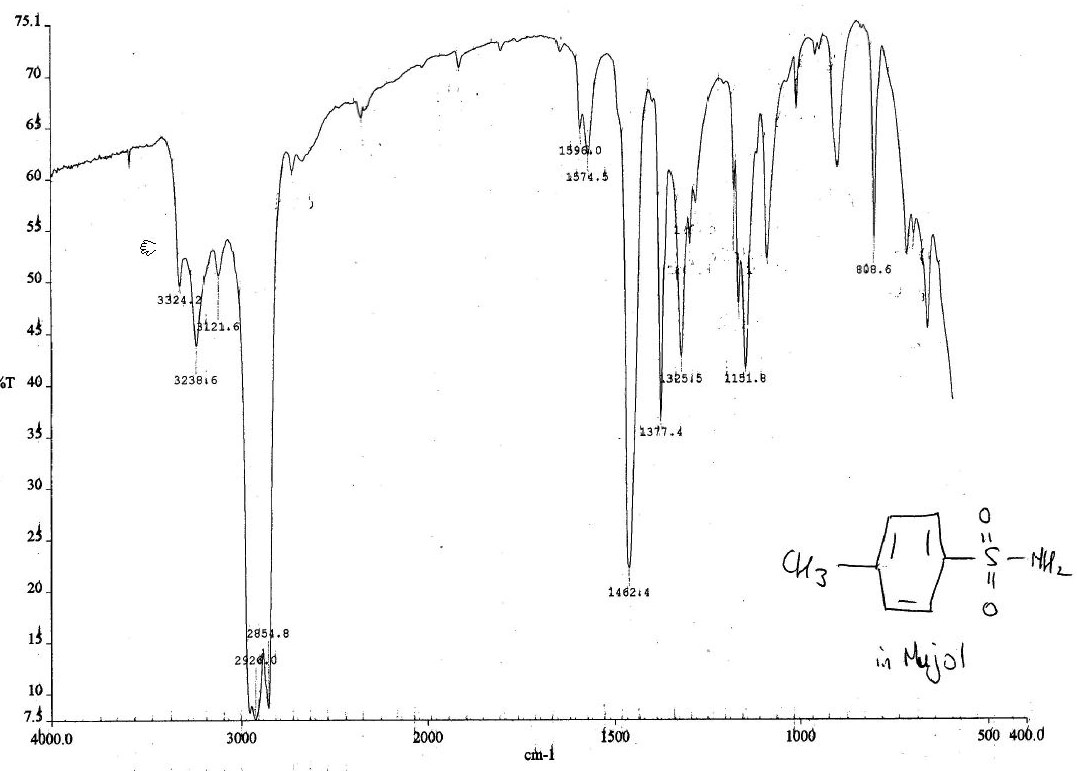Spectral Problems
Spectra for the followng compounds are shown below (IR,
1H NMR, MS of p-bromophenacyl bromide (1) and
crude acetate (2); IR and 1H NMR of
p-toluenesulphonamide (3).
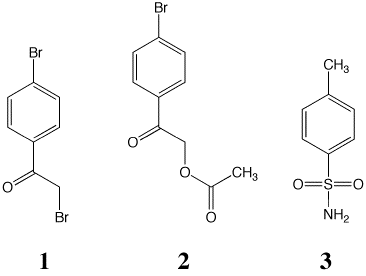
The following questions should be considered:
- What is the most likely impurity in the crude
p-bromophenacyl acetate from the IR spectrum (Spectrum 4; it
was prepared in aqueous ethanol)?
- Assign the major peaks (2 x C=O, 1 x C-0, Nujol) in this
spectrum
- For the NMR and MS spectra of starting p-bromophenacyl
bromide and product p-bromophenacyl acetate decide which
spectra belong to which compound.
- Assign the peaks in these spectra, especially noting the
bromine isotope patterns in the MS
- For more advanced discussions talk about the four lines
in the aromatic region of the two NMR spectra (further
examples where the lines converge may be found in the Aldrich
library)
- Assign the peaks in the IR and NMR of
p-toluenesulphonamide (note another AB in the aromatics)
Spectrum 1, IR p-bromophenacyl bromide
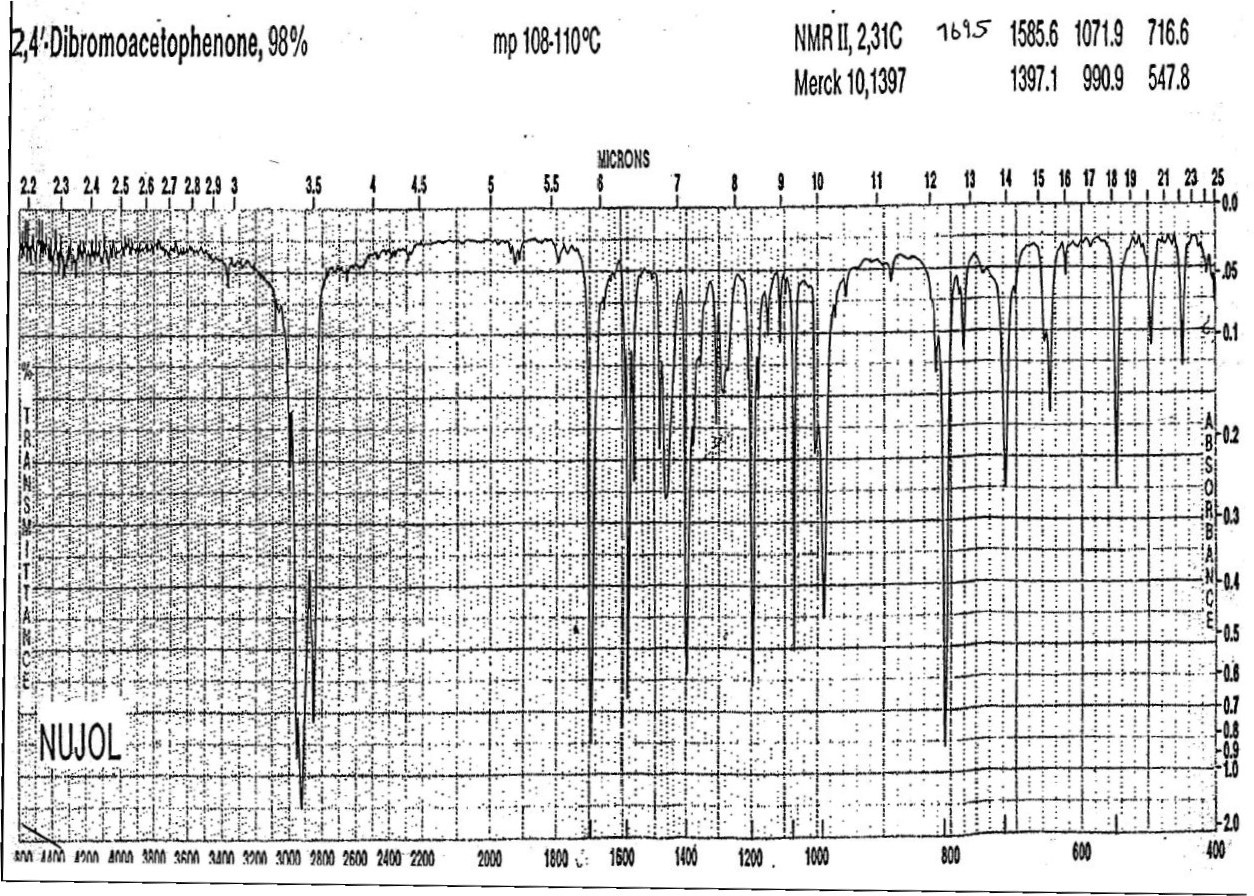
Spectrum 2, MS of p-bromophenacyl bromide/p-bromophenacyl
crude acetate
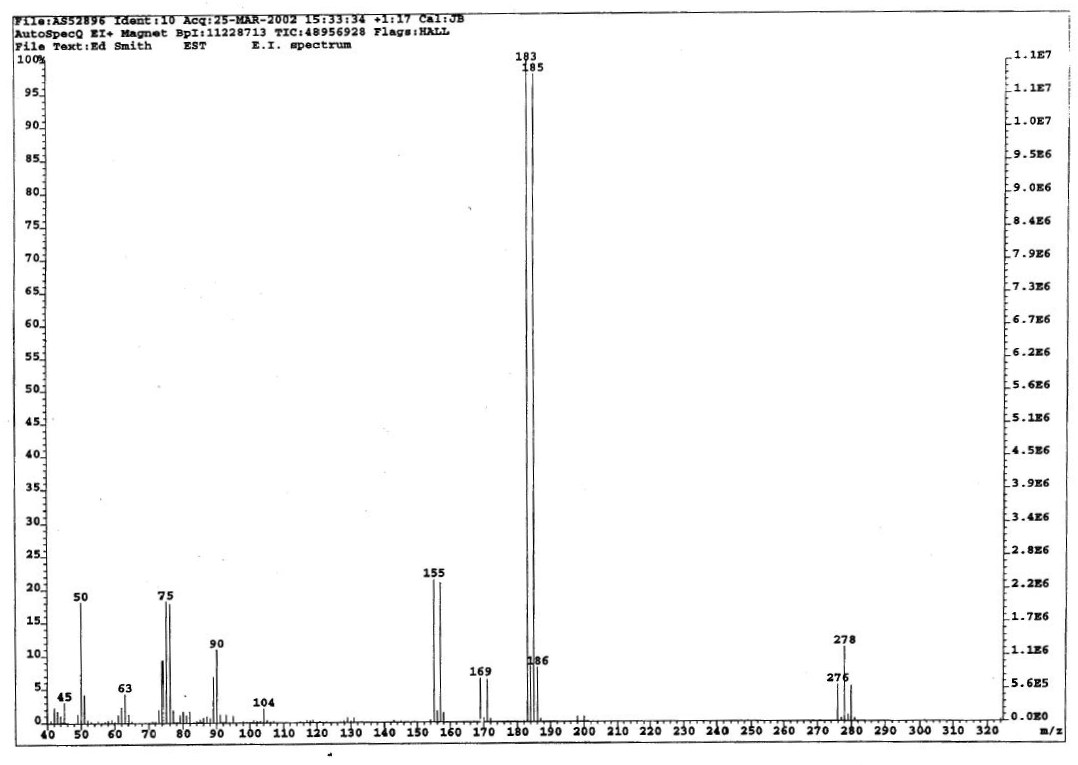
Spectrum 3, 1H NMR for p-bromophenacyl
bromide/p-bromophenacyl crude acetate
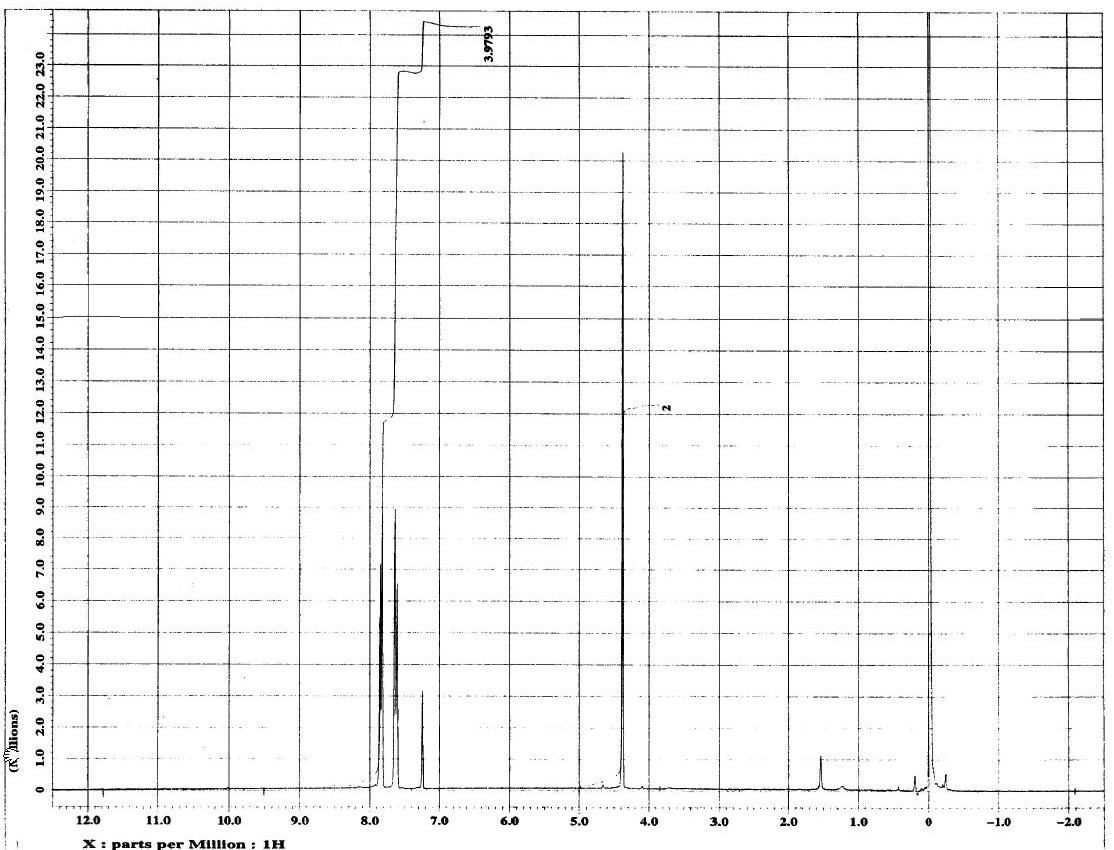
Spectrum 4, IR for p-bromophenacyl crude acetate
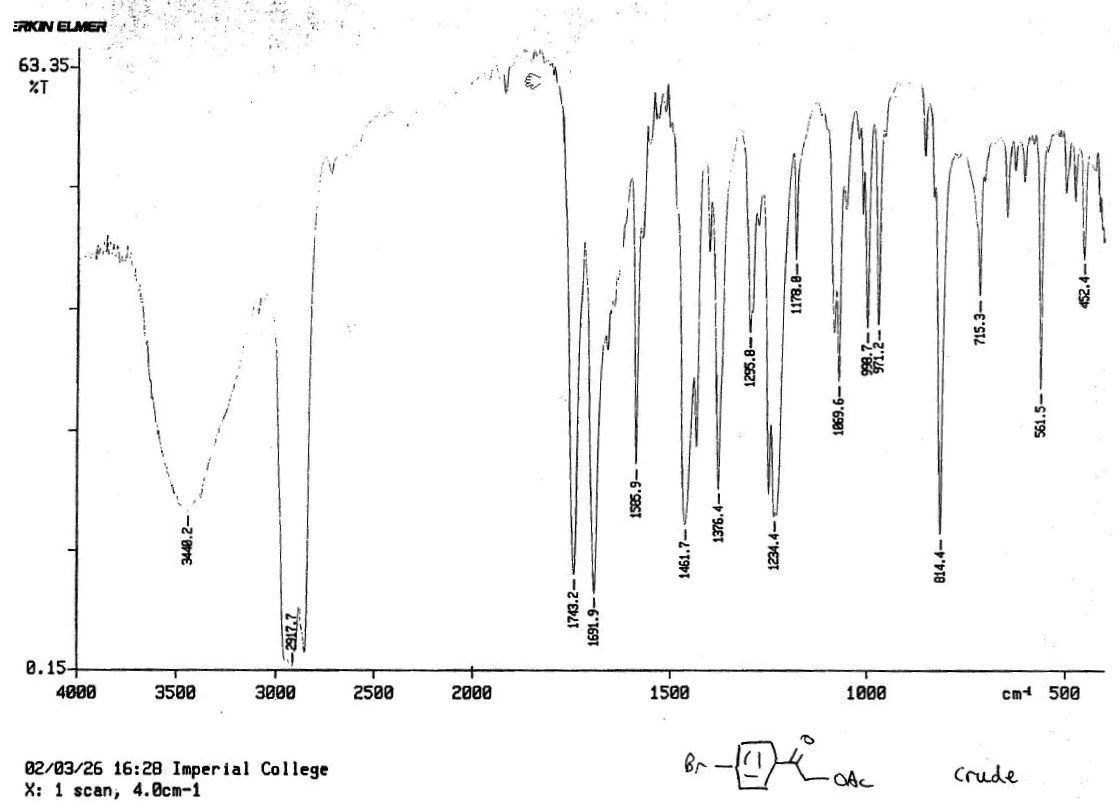
Spectrum 5, MS for p-bromophenacyl bromide/p-bromophenacyl
crude acetate
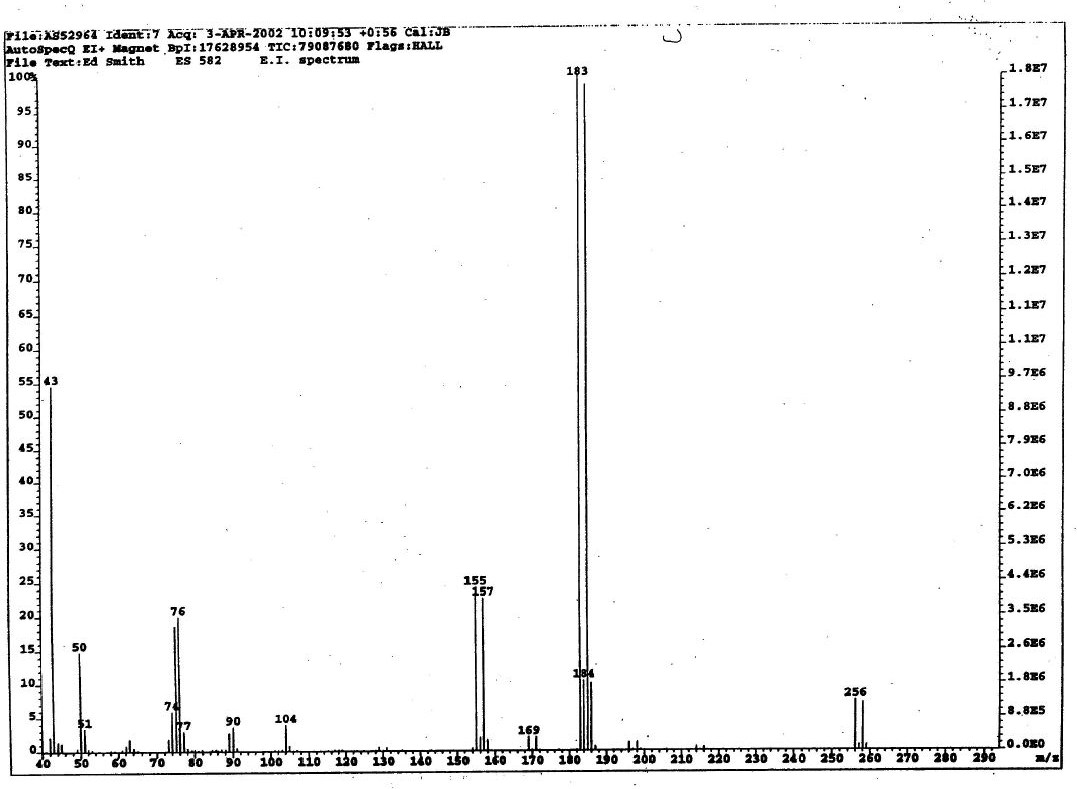
Spectrum 6, 11H NMR for p-bromophenacyl
bromide/p-bromophenacyl crude acetate
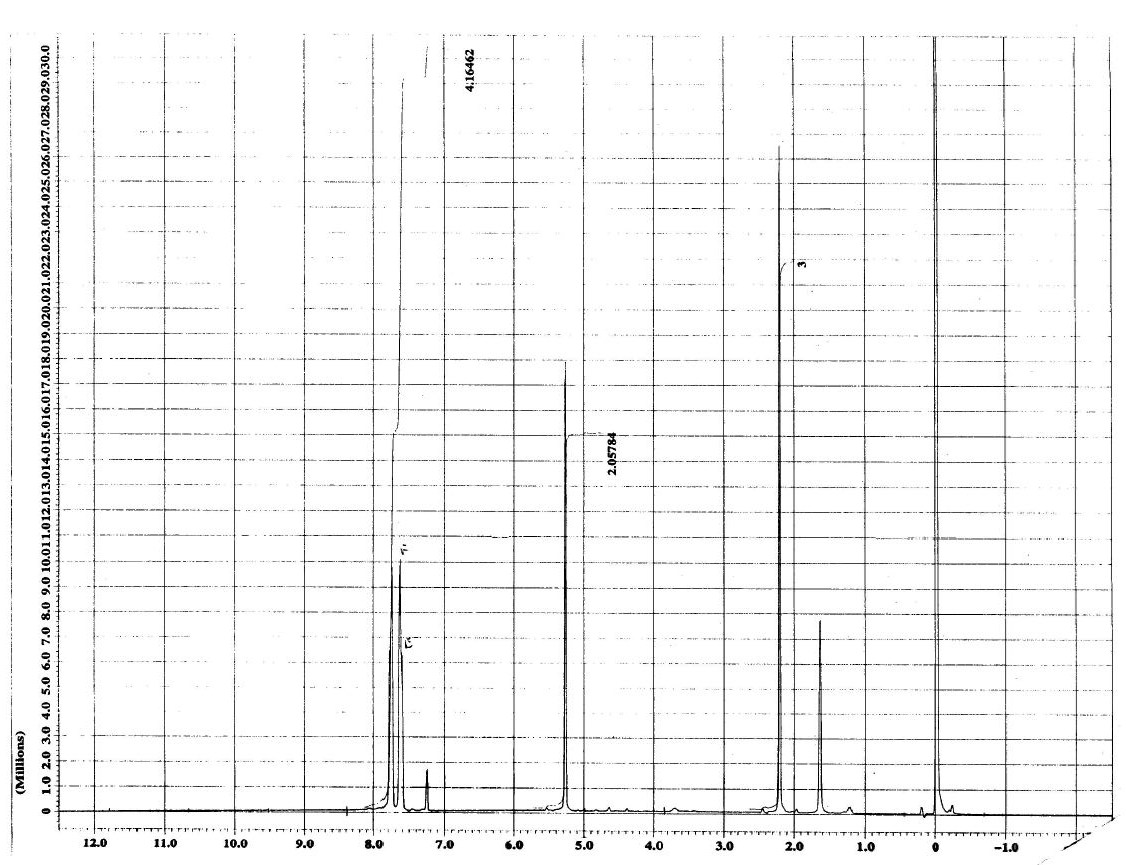
Spectrum 7 11H NMR for p-toluenesulphonamide
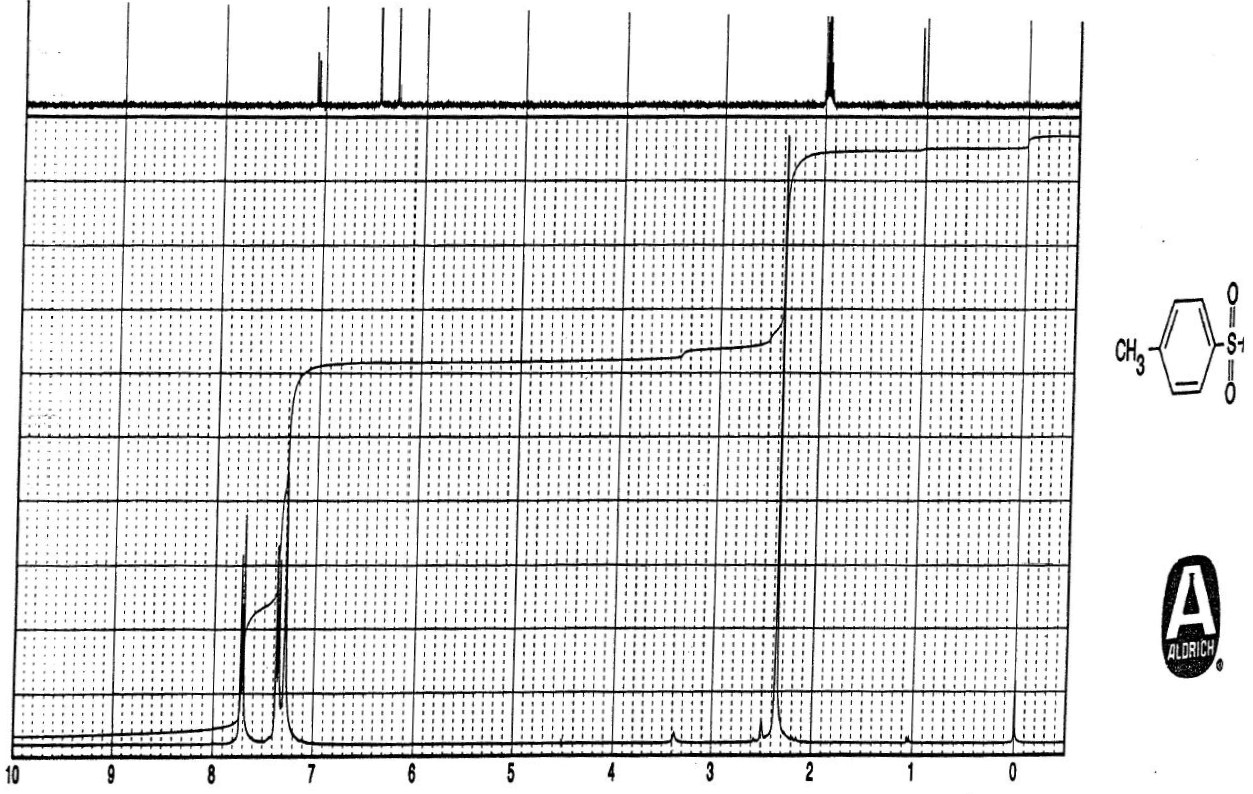
Spectrum 8. IR for p-toluenesulphonamide
